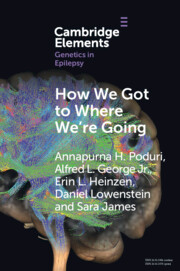Element contents
How We Got to Where We're Going
Published online by Cambridge University Press: 31 August 2021
Summary
- Type
- Element
- Information
- Series: Elements in Genetics in EpilepsyOnline ISBN: 9781009000420Publisher: Cambridge University PressPrint publication: 30 September 2021

